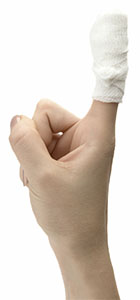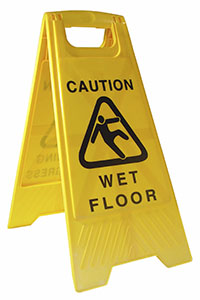March 8, 2018
Austin natives take pride in the city's eccentricities with the motto, "Keep Austin Weird," but now Austin is also priding itself on making workplaces safer. To help Austin business owners keep their workers safe, Texas Mutual recently analyzed which types of workplace injuries are the most common in the capital city.
Using claim data from Austin-area businesses, Texas Mutual found that the highest number of claims were reported in the services (40 percent), construction (20 percent), and retail (17 percent) industries. We've listed the top three injury categories across all industries below.
1. Strain, sprain or other injuries from lifting
Our data shows that the most common workplace injuries in Austin are caused by lifting, with nearly half of these types of injuries occurring in the services industry and around 25 percent occurring in the construction industry.
Strains can also be caused by carrying, pushing, pulling and bending/twisting. Any job that involves heavy labor or manual material handling may include a high risk for injury on the job. Lifting heavy loads may lead to damaged muscles, tendons, ligaments, nerves and blood vessels.
Planning is the key to safe lifting. Follow these techniques to stay safe:
- Size up the load (load capacity) and determine if you can lift it safely.
- Ask for help, or use dollies or other material handling equipment.
- Center the load between your legs and shoulders.
- Lift with your legs, keeping the object as close to your body as possible.
- Keep your back straight as you lift.
- Break the load into smaller loads, and take more trips.
- Always push; never pull.
- Never twist while lifting or carrying an object.

2. Cut, puncture and scrape injuries
The second most common injury type is cuts, punctures and scrapes, with nearly half of these types of injuries occurring in the services industry. From box cutters to table saws, there are plenty of opportunities for cuts, punctures and scrapes in all work environments. While all body parts could easily be at risk, workers' hands receive the majority of these types of injuries. Staying alert, using personal protective equipment (PPE), and utilizing the right tool can protect your hands while still allowing you to get the job done efficiently.
When you have the correct tool and are ready to begin a task, follow these steps to make it through in one piece:
- Inspect your tool before each use - even if it's a kitchen knife. If you notice any damage, remove it from service and let a supervisor know.
- Don't rush through tasks involving sharp objects. Take your time and focus on the task.
- Wear appropriate cut-resistant gloves and check them frequently for wear and damage.
- Remove rings or bracelets before working with sharp items if there's a chance they could become caught.
- Do not remove machine-guarding equipment, and if you notice any damage to guards, let a supervisor know immediately.
- Never reach into a machine unless proper lockout/tagout procedures have been followed.
- When cutting, use a sharp blade. If the blade has become dull, more force is required to make a cut, which could result in less control and increase the risk of injury.
- Do not leave exposed blades unattended. Retract them or place them back where they belong before leaving the area.
- When using box cutters, keep the blade directed away from your body. Hold the object being cut with your second hand, but keep your hand behind the blade (not in the path of the cut).
- Never try to catch a falling cutting tool; stand back and let it fall to the ground.

3. Fall, slip or trip
The third most common category of injury types is falls, slips or trips. Fifty-five percent of these incidents occur in the services industry, but slips, trips and falls are hazards faced by all employees on a daily basis. Certain PPE, such as slip resistant shoes and floor mats can help to reduce the risk of a slip, trip or fall. However, PPE should never be used as a replacement for safe work practices.
Follow these tips to reduce the slips and trips in your workplace:
- Poor housekeeping is one of the most common causes of slips, trips and falls. Keep your workplace neat and pay attention to your surroundings.
- Make sure that walking surfaces are clear of any tools, equipment, trash or other clutter.
- If you notice any damage or spills on a walkway or stairs, report it to your supervisor and clean the spill as soon as possible.
- Avoid running cords across walkways or cover them with tape or a cord cover when it's unavoidable.
- Only carry manageable loads that you can see over, and remember to push instead of pull so that you can face forward.
- Pay attention when walking, keep a slower pace and use the handrail on stairs. Stay off your phone while moving.
- Don't use other items such as chairs or tables as a substitute for ladders, and make sure that you have the proper ladder for the job.
As the leading provider of workers' compensation insurance in the state, Texas Mutual is committed to building a stronger, safer Texas. Our policyholders have exclusive access to more than 2,000 resources, including over 200 e-Learning online training modules to help prevent these types of injuries and others in their workplace. To visit the safety resource center, log into your texasmutual.com account and select the safety tab.